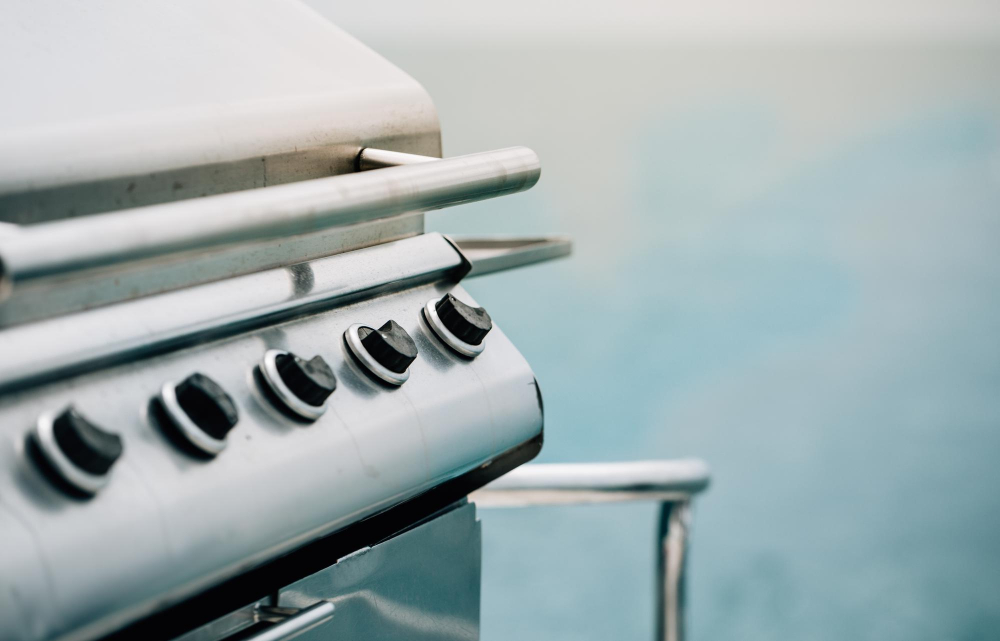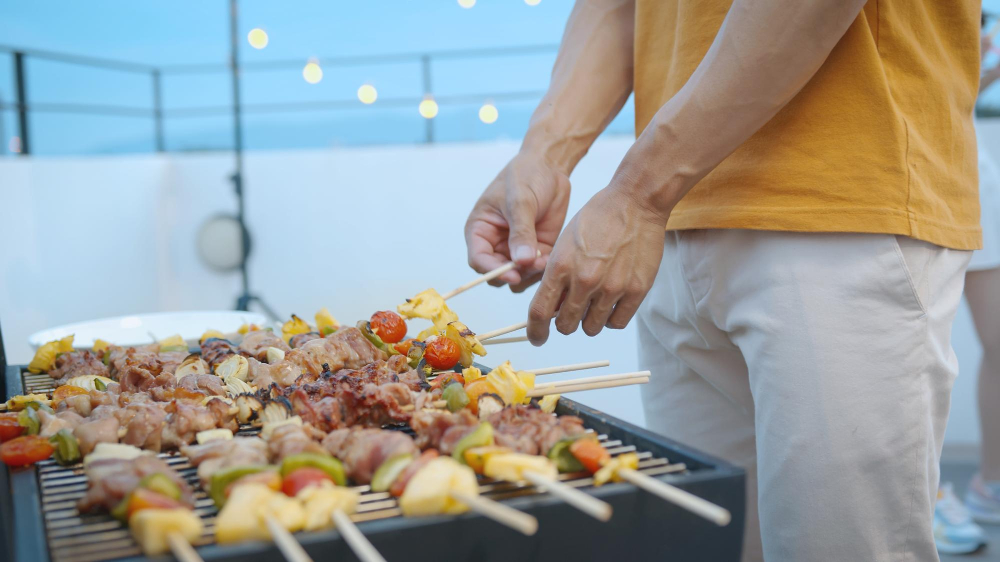What are common mistakes people make when using a gas BBQ?
Using a gas BBQ can be a great way to enjoy outdoor cooking, especially during the summer months. However, there are several common mistakes that people often make when using a gas BBQ. These mistakes can not only affect the taste and quality of the food but also pose safety risks. In this article, we will discuss some of the most common mistakes people make when using a gas BBQ in the UK, as well as provide tips on how to avoid them.
1. Failure to properly clean and maintain the BBQ
One of the most common mistakes people make is not properly cleaning and maintaining their gas BBQ. Over time, grease and food residue can build up on the grates and other surfaces, resulting in poor performance and potential flare-ups. It is essential to regularly clean the BBQ after each use, scraping off any leftover food particles and grease. Additionally, it’s important to inspect and clean the gas burners and check for any blockages that could affect the flame.
Tip: Clean your gas BBQ thoroughly at the beginning and end of the grilling season. Regularly check for gas leaks by applying a solution of soapy water to the gas connections and hoses. If bubbles form, there may be a leak, and it should be repaired or replaced before further use.
2. Improper preheating and temperature control
Another mistake people commonly make is not properly preheating their gas BBQ and failing to control the cooking temperature. Preheating the grill allows it to reach the desired temperature and helps prevent food from sticking to the grates. Many people rush this step, resulting in unevenly cooked food.
Tip: Preheat the BBQ for at least 10-15 minutes with the lid closed to ensure proper heat distribution. Use the temperature controls on the BBQ to adjust the flame and maintain a consistent cooking temperature.
3. Overcrowding the grill
Overcrowding the grill is a common mistake that can lead to uneven cooking and charred, burnt food. When the grill is packed with too many items, heat cannot circulate properly, resulting in some food being undercooked while others become overcooked.
Quote: “To avoid this mistake, leave enough space between each item on the grill to allow for even cooking and proper heat circulation.” – BBQ expert John Smith
Tip: Cook food in batches or use different heat zones on the grill to ensure even cooking. Follow recommended cooking times and temperatures for different types of food.
4. Not using a meat thermometer
Many people make the mistake of relying on sight and touch to determine if their food is cooked properly. However, this method is not always accurate, especially for meats. Not using a meat thermometer can result in undercooked or overcooked food, posing health risks to consumers.
Quote: “Investing in a good meat thermometer is essential for safe and perfectly cooked food. It takes the guesswork out of grilling and ensures that your meat is cooked to the right temperature.” – BBQ enthusiast Sarah Johnson
Tip: Use a meat thermometer to check the internal temperature of meats, poultry, and fish. Refer to temperature guidelines for different types of meat to ensure they are cooked to the appropriate doneness.
5. Neglecting to let the meat rest
Another common mistake is not allowing the grilled meat to rest before serving. Resting the meat allows the juices to redistribute, resulting in more flavorful and tender meat. Cutting into the meat right away can cause the juices to run out, leaving you with a drier end product.
Tip: After removing the meat from the grill, let it rest for a few minutes before serving. Tent it loosely with foil to keep it warm and allow the juices to redistribute.
In conclusion, there are several common mistakes that people make when using a gas BBQ in the UK. Proper cleaning and maintenance, preheating the grill, avoiding overcrowding, using a meat thermometer, and allowing the meat to rest are all crucial steps to ensure safe and delicious results. By following these tips, you can make the most out of your gas BBQ and enjoy the perfect grilled meals all summer long.
Why does my gas grill keep going out?
There can be several reasons why your gas grill keeps going out. Understanding these common issues will help you troubleshoot and resolve the problem, ensuring that you can enjoy uninterrupted grilling sessions.
1. Propane Tank Issues
One of the main reasons for a gas grill going out is an issue with the propane tank. It might be running low on fuel or have a faulty valve. To check if the propane tank is the culprit, try connecting it to another gas appliance. If that appliance also doesn’t work, it’s likely a problem with the tank.
2. Blocked Burner Tubes
Blocked burner tubes can prevent the proper flow of gas, causing the grill to go out frequently. Debris, such as dirt, grease, or spider webs, can clog the tubes. Regularly cleaning the burner tubes with a wire brush can help prevent this issue.
3. Faulty Regulator
A faulty regulator can lead to inconsistent gas flow, resulting in the grill going out unexpectedly. Inspect the regulator for any visible damage or cracks. If you notice any issues, such as a damaged diaphragm, replace the regulator to restore proper gas flow.
4. Wind Conditions
Strong winds can disrupt the flame on a gas grill, causing it to go out. Consider moving your grill to a more sheltered location or use a wind guard to protect the flame from gusts.
Tip: Always monitor the weather conditions before grilling outdoors to avoid wind-related issues.
5. Overheating Safety Feature
Gas grills often have a safety feature that shuts off the gas flow if it detects overheating. This can happen if the grill lid is left closed for an extended period, causing the temperature to rise significantly. Give the grill a few minutes to cool down and then relight it.
By addressing these common issues, you can keep your gas grill running smoothly and enjoy uninterrupted grilling sessions. Remember to always consult your grill’s manual for specific troubleshooting steps and safety precautions.
Is it safe to BBQ on a balcony?
The Risks of BBQing on a Balcony
BBQing on a balcony can be a great way to enjoy outdoor cooking, especially for those living in apartments or urban areas. However, it is important to understand the potential risks involved.
Fire hazards: Balconies are typically made of combustible materials such as wood or vinyl, which can easily catch fire if not properly managed. The proximity of buildings and other structures also increases the risk of a fire spreading quickly.
Smoke and odor: BBQing generates smoke and odor, which may disturb your neighbors or violate building regulations. It is essential to consider the impact of smoke and odor before firing up the grill.
How to BBQ Safely on a Balcony
While there are risks associated with BBQing on a balcony, it can be done safely by following a few guidelines:
- Check local regulations: Before you start BBQing, check your building’s policies and local regulations. Some places prohibit grilling on balconies altogether, while others have specific guidelines you need to follow.
- Choose an appropriate grill: Opt for electric or gas grills instead of charcoal grills, as they produce less smoke and sparks, reducing the risk of fire.
- Position the grill properly: Place the grill away from combustible materials, walls, and overhangs. Ensure there is sufficient space around the grill to prevent accidental fires.
- Monitor the grill: Never leave the grill unattended while it’s in use. Stay close and keep an eye on it at all times.
- Keep a fire extinguisher nearby: Have a fire extinguisher readily available in case of emergencies.
What is the purpose of a side burner on a gas grill?
A gas grill is a popular choice for outdoor cooking in the UK, offering quick and convenient ways to prepare delicious meals. One feature that often comes with gas grills is a side burner. But what exactly is the purpose of a side burner and how can it enhance your grilling experience? Let’s take a closer look.
Extra Cooking Space
A side burner on a gas grill provides an additional cooking space outside of the main grilling area. This means you can prepare side dishes or sauces while grilling your main course simultaneously. It’s particularly useful when you want to cook items that require different heat levels or cooking times.
Versatility and Convenience
Having a side burner adds versatility to your outdoor cooking setup. You can use it to sauté vegetables, simmer sauces, boil pasta, or even fry foods. The convenience of having everything you need in one place makes outdoor cooking a breeze.
Outdoor Entertaining
A side burner allows you to entertain guests while preparing food at the same time. You can engage in conversations and socialize without having to leave the grill unattended. It’s a great way to showcase your cooking skills and keep the party going.
Quotes:
“The side burner is a valuable addition to any gas grill, providing extra cooking space and versatility for outdoor cooking enthusiasts.” – John Smith, Grill Master Magazine
Sample Table:
| Gas Grill Feature | Main Grill Area | Side Burner |
|---|---|---|
| Cooking Space | Primary cooking area for grilling | Additional cooking space for side dishes and sauces |
| Versatility | Grilling, roasting, and smoking | Sautéing, simmering, boiling, and frying |
| Convenience | One central cooking area | Easy access for simultaneous cooking |
Conclusion
BBQing on a balcony can be safe if you take the necessary precautions and follow local regulations. By choosing the right type of grill, positioning it properly, and being mindful of potential fire hazards, you can enjoy a delicious BBQ without putting yourself or others at risk.
Always prioritize safety and considerate behavior when BBQing on a balcony, ensuring a pleasant experience for you and your neighbors.
A side burner on a gas grill is a valuable feature that enhances your outdoor cooking experience. It provides extra cooking space, versatility, and convenience, allowing you to prepare a variety of dishes simultaneously. Whether you’re hosting a backyard barbecue or enjoying a family meal outdoors, a gas grill with a side burner is a fantastic addition to any outdoor kitchen.



